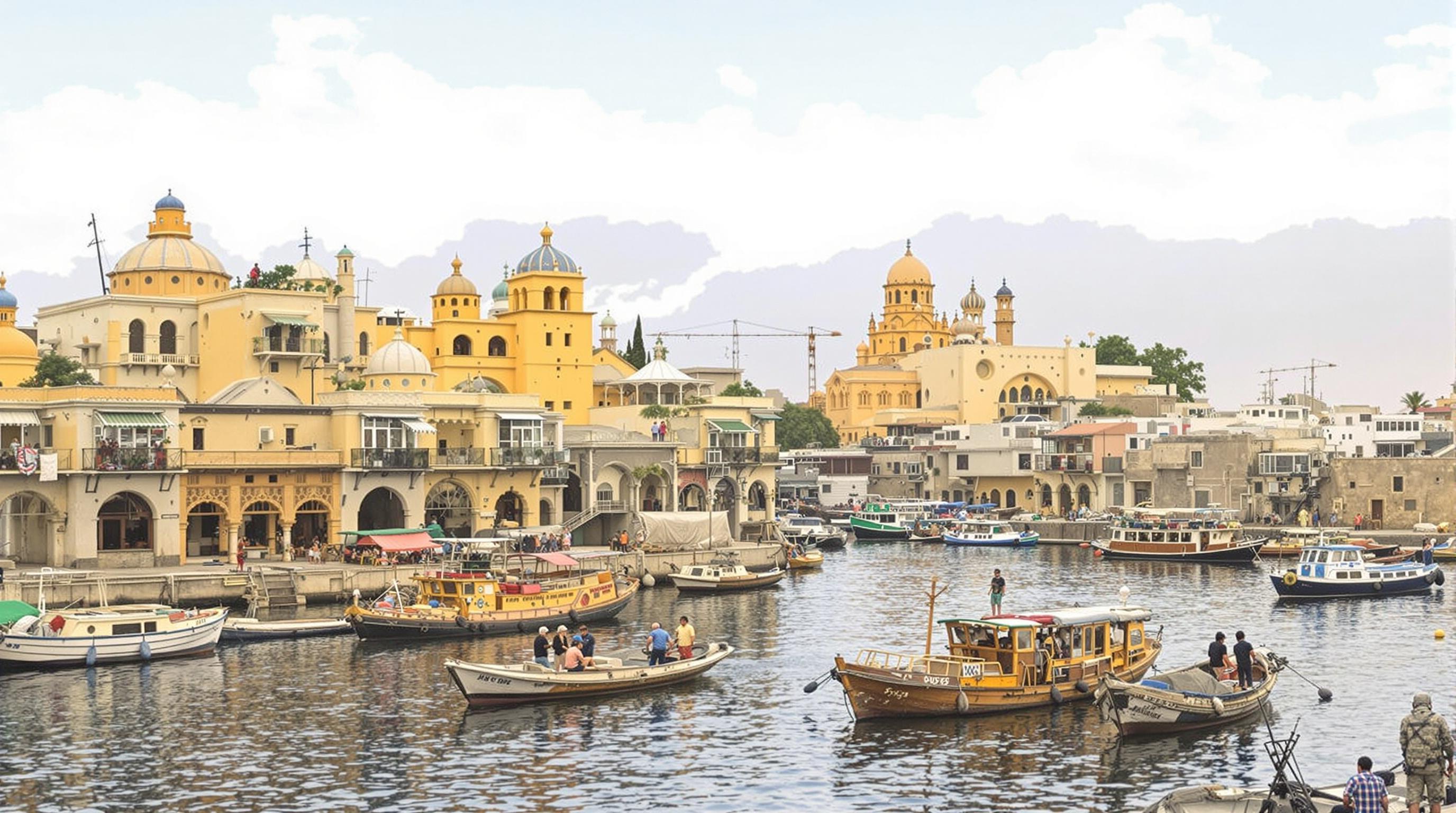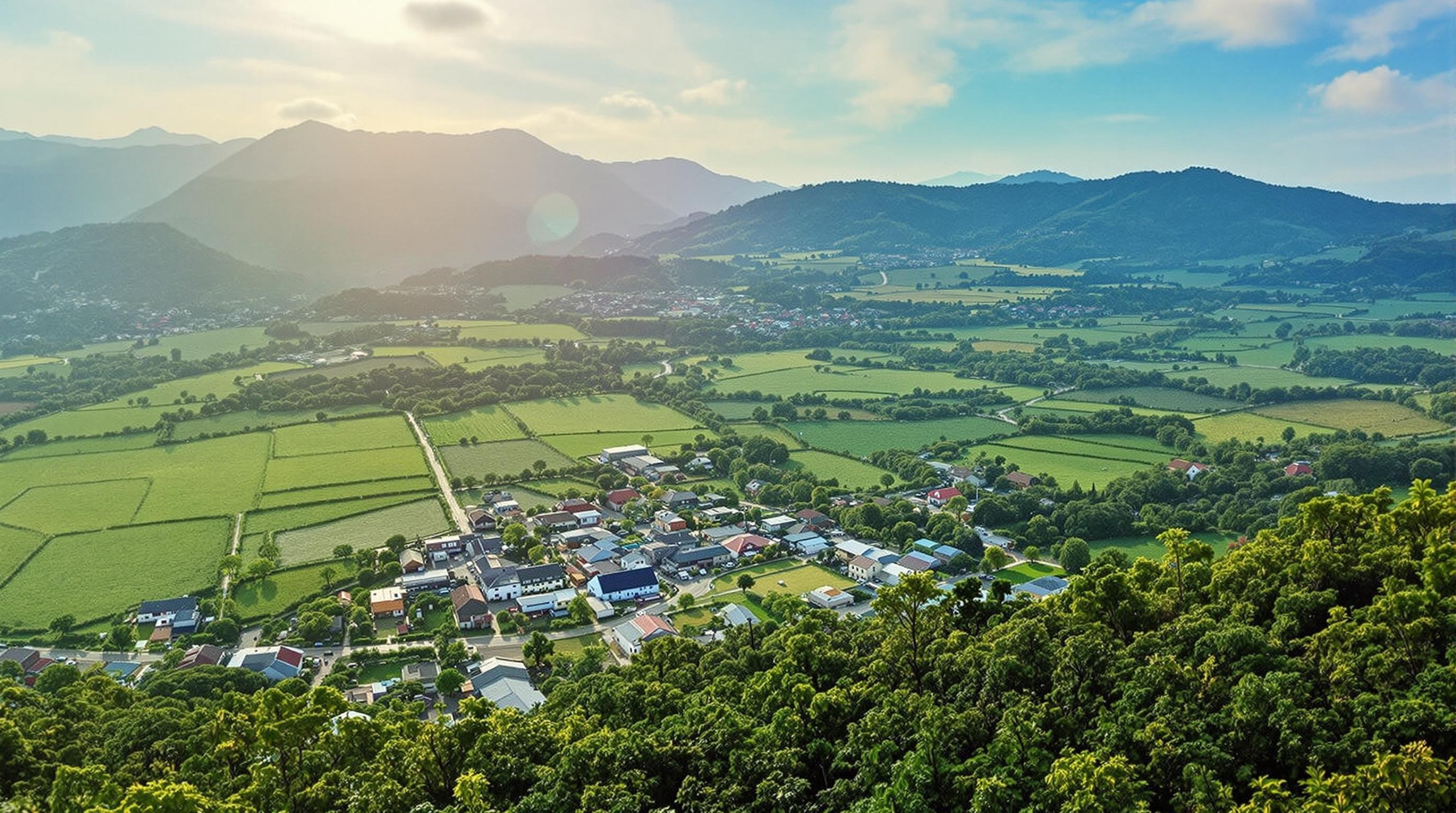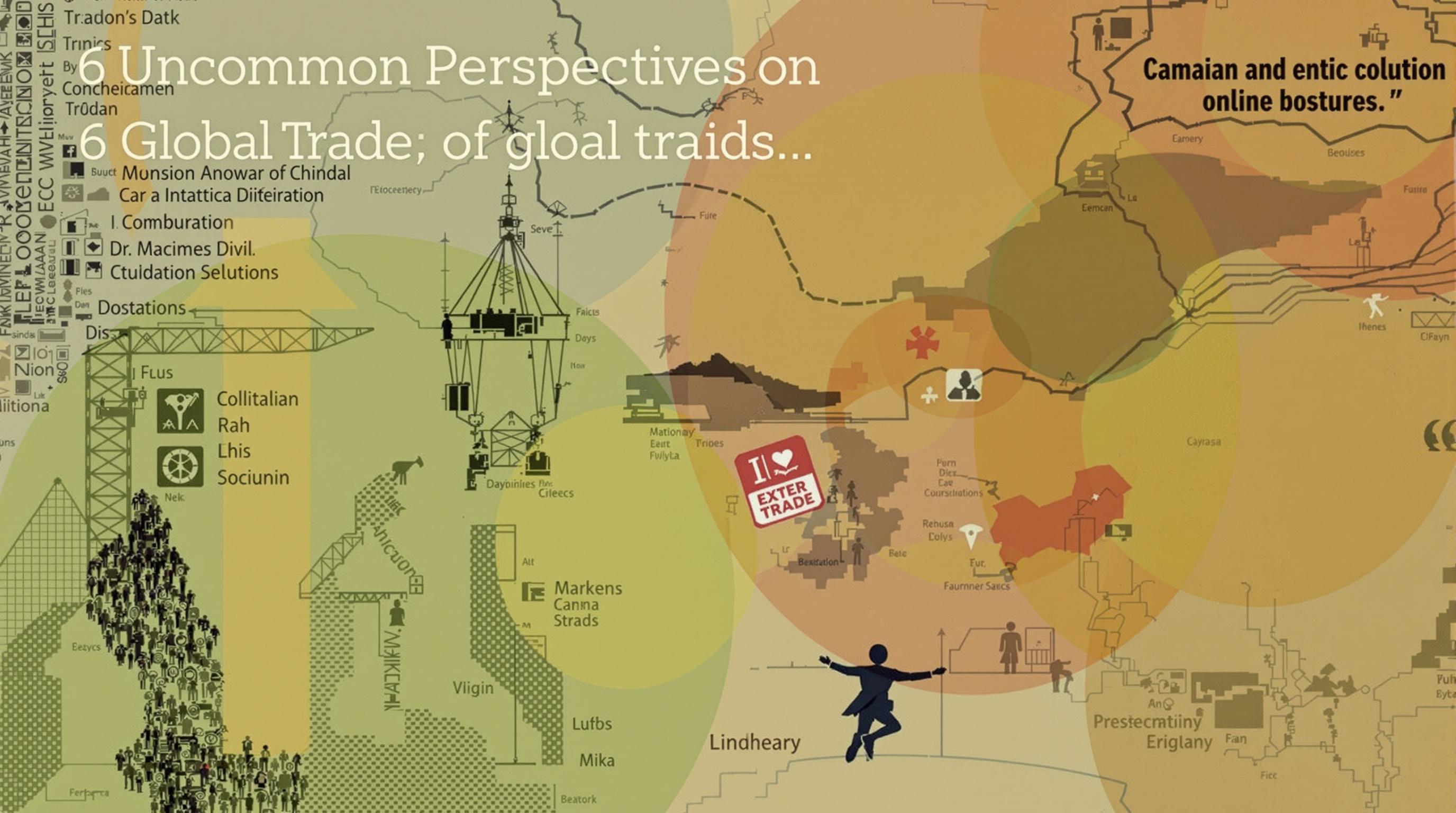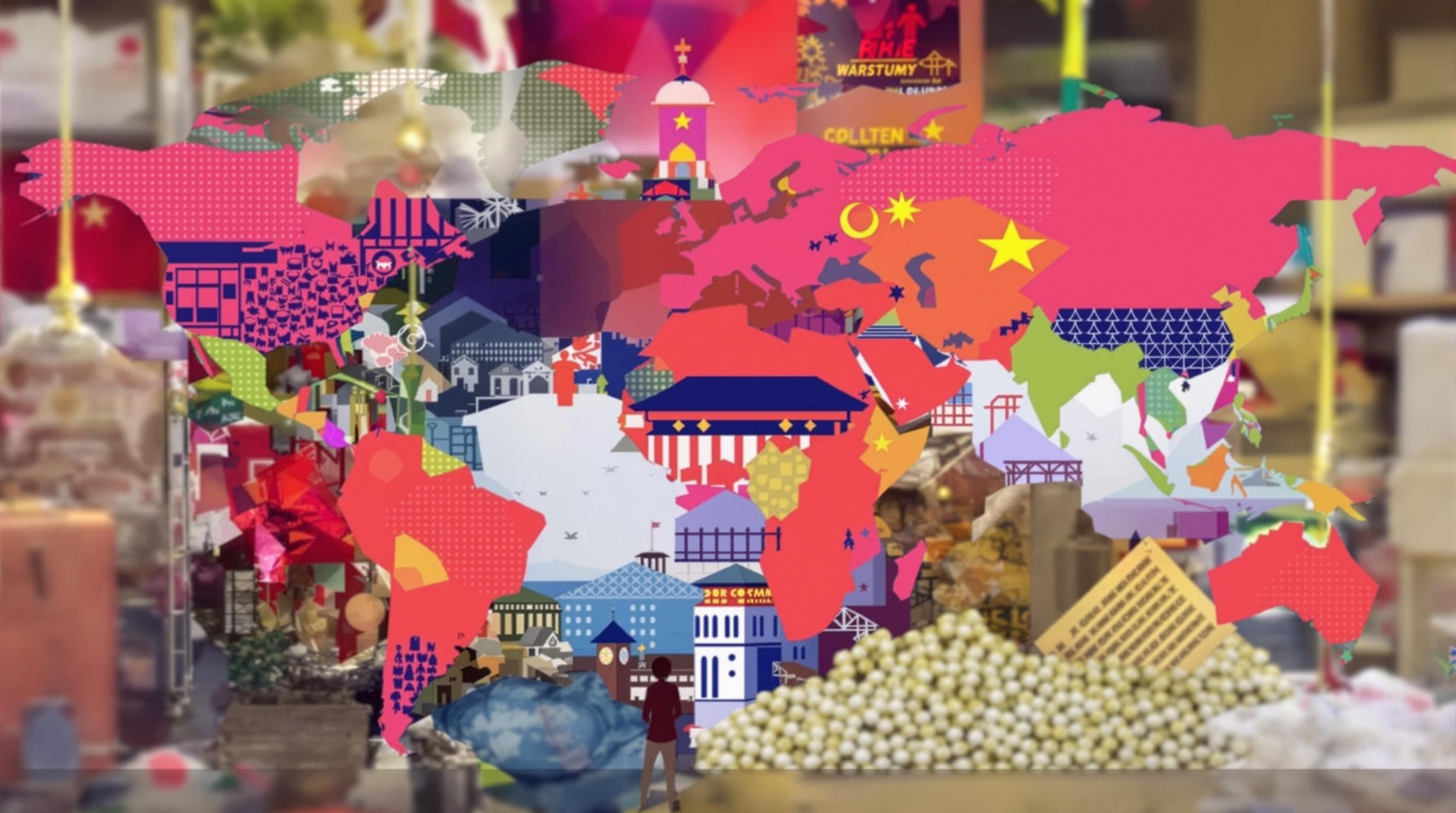Related Articles
- When Ancient Trade Routes Resurface: Unexpected Lessons for Modern Commerce and Global Economic Resilience
- When Artifacts Become Currencies: The Intriguing Trade Between Antiquities and Emerging Markets
- Beyond Borders: Unconventional Partnerships Transforming Trade Strategies in the Age of Globalization
- The Rise of Shadow Economies: How Informal Trade Networks are Disrupting Global Market Structures
- Cryptocurrency and Society: Understanding the Hidden Costs of Digital Assets on Community Well-Being
- The Surprising Role of Cultural Narratives in Shaping Investment Choices and Financial Preferences
When Ancient Trade Routes Resurface: Unexpected Lessons for Modern Commerce and Global Economic Resilience
When Ancient Trade Routes Resurface: Unexpected Lessons for Modern Commerce and Global Economic Resilience
In a world grappling with rapid globalization and economic uncertainty, the resurrection of ancient trade routes offers valuable insights for modern commerce and resilience. By examining these historical pathways, we uncover lessons about adaptability, cultural exchange, and strategic resource management that are crucial in navigating today's complex economic landscape.
Rediscovering Ancient Trade Routes
Imagine a world before the internet, before cargo ships powered by the latest technology. Ancient trade routes were the lifelines of civilizations, connecting diverse cultures and economies long before globalization became a common buzzword. The Silk Road, for instance, wasn’t merely a passage for goods like silk and spices; it was a vibrant network of ideas, knowledge, and interchange. Today, this concept of connectivity is being revisited as we look for models that can withstand modern challenges.
The Silk Road: More than Just Routes
Consider the Silk Road, which lasted several centuries and linked Asia to Europe. Spanning over 4,000 miles, goods like silk traveled from China to the West, while cultural and technological exchanges flourished. One striking example is how papermaking—originating in China in the 2nd century CE—eventually spread to the Islamic world and then to Europe, revolutionizing record-keeping, literature, and education. This dynamic form of commerce highlights the importance of trade in the development of civilizations, which brings us to a crucial question: what do these ancient routes teach us about resilience today?
Flexibility and Adaptability in Modern Commerce
The ancient merchants' ability to navigate unforeseen challenges mirrors the agility required in today’s global economy. For example, during the COVID-19 pandemic, businesses were forced to pivot rapidly, just as traders did when natural disasters or political turmoil disrupted their routes. Some companies, like Zoom, saw unprecedented growth by adapting their services to meet new demands, while others had to rethink their entire business models. These scalable adjustments echo the flexibility required by traders of old who had to reroute their journeys to stay profitable.
Cultural Exchange as Economic Strategy
Cultural exchange played a significant role in the success of ancient trade networks, fostering trust and collaboration among diverse peoples. Similarly, modern businesses can leverage cultural understanding to build stronger global partnerships. The “Lego Model” in education, for instance, illustrates this perfectly; brands like LEGO have shifted focus from just toys to community-building experiences that engage multiple cultures. By fostering an environment of inclusion and understanding, companies can strengthen their market position while promoting global cohesion.
The Role of Technology
If the traders of yore had access to today’s technology, they would undoubtedly utilize tools like GPS and e-commerce platforms. Yet, just as the traditional methods were vital in their time, a hybrid of old and new remains essential. For example, traditional artisans in Morocco are using social media to sell handmade products globally, preserving their cultural heritage while adapting to modern market demands. This digital revolution connects ancient craftsmanship with today's consumer culture, presenting an opportunity for sustainable economic models.
A Case Study: The Spice Trade
The spice trade, much like the Silk Road, connects continents through culinary exchange—a delicious yet poignant reminder of how food unites us. During the height of the spice trade in the 17th century, spices were as valuable as gold. They not only influenced cuisine but also catalyzed colonization, shaping modern geopolitical maps. Today, companies like McCormick & Company leverage this heritage to tap into consumers' growing interest in exotic flavors, reinforcing the notion that understanding history can empower modern market strategies.
Sustainable Practices: Learning from the Past
As we face the repercussions of climate change and resource depletion, the sustainable practices of ancient trade offer crucial lessons. For instance, the Inca civilization managed extensive agricultural systems using terrace farming, allowing them to thrive in the challenging mountain environments of Peru. Today, with a renewed focus on sustainable practices, businesses are adopting methods like regenerative agriculture to ensure long-term viability. This historical understanding can drive modern initiatives toward environmental and economic resilience.
The Interconnectedness of Economies
The ancient trade routes tell a compelling story about interdependence. Just as silk from China started many cultural exchanges, today’s economies are interconnected in ways we sometimes forget. For example, during the supply chain disruptions caused by the pandemic, we witnessed how problems in one part of the world can affect economies globally. According to the United Nations Conference on Trade and Development (UNCTAD), trade fell by approximately 5% in 2020, emphasizing the fragility of our interconnected systems. Businesses can learn from this and build more resilience into their systems, echoing the adaptability of ancient traders.
Lessons in Strategic Diversification
Many ancient traders practiced diversification to lessen financial risks. They didn’t depend on a single good or route; instead, they adapted their offerings and explored various pathways. Similarly, modern businesses can strengthen their resilience by diversifying supply chains and exploring new markets. A pertinent example here is the automotive industry, which has increasingly turned to electric vehicles, minimizing reliance on fossil fuels amidst changing consumer preferences and regulatory mandates. Companies like Tesla have not only adapted to consumer needs but have built their brands around sustainability—something early traders likely would have appreciated.
Humor and Humanity: Keeping Your Brand Authentic
Let’s not forget the importance of grabbing attention—and humor often does the trick! Remember the hilarious “Old Spice” commercials? Just as ancient traders used storytelling to captivate their audiences, in the modern age, brands can reach their consumers by adding humor to their narratives. A well-timed pun or witty advertisement can engage and create memorable impressions, driving brand loyalty. This strategy harks back to the days when tales of adventurous traders and their exotic goods stirred the imaginations of onlookers, prompting them to buy.
The Youth Factor
There’s a reason young entrepreneurs are redefining commerce! At 21, I’m already seeing my peers launch startups by blending ancient trade principles with innovative approaches. Take Fair Trade, for instance, a concept based on equitable trading conditions for producers, reminiscent of the barter systems used centuries ago. Millennials and Gen Z consumers are driving demand for ethical products, and businesses that understand this demographic can thrive. By grounding modern commerce in historical understanding, we foster a new age of economically aware consumers who value connection and ethics.
Convergence of Commerce, Culture, and Capital
In wrapping up this exploration of ancient trade routes and their modern parallels, we must acknowledge the convergence of commerce, culture, and capital. As businesses discover fresh ways to thrive, the legacy of ancient trade can guide their strategies. For instance, e-commerce giants like Amazon have become modern-day marketplaces but also have room for learning from local vendors and for embracing fair trade principles. By respecting the cultural goods they sell and the artisans who create them, retailers can create an economic ecosystem that honors traditions while fueling growth.
Embracing the Future: Lessons from Ancient Wisdom
In conclusion, the revival of ancient trade routes provides a treasure trove of wisdom for modern commerce. Understanding the past equips us to overcome contemporary challenges by fostering resilience, adaptability, and cultural exchange. The blend of these lessons can create a robust framework for navigating today's economic landscape, offering hope and strategic foresight for future generations of commerce. So next time you tap into your e-commerce app, remember that you’re part of a vast, interconnected web—rooted in history but reaching for the future.





